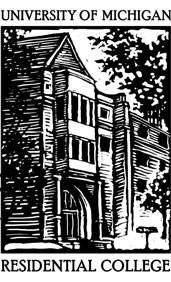On March the 3rd, our group left the comfort and
the splendor of St. Petersburg to embark on the adventurous, over 400 km voyage
towards the city of Vytegra. As we began to exit St. Petersburg, it was
striking to observe how quickly the city’s infrastructure and architecture
changed drastically. As soon as the bus abandoned the historical center, empty
lots and shabby, Soviet-era communal apartment complexes confronted us. If in
the historical center, the imperial project constantly surrounded us, in the
outskirts of Petersburg, the ruins of the Soviet project engulfed us. At one
point, a thick forest of concrete and steel overwhelmed us. Yet, most of the
apartment complexes appeared cold, unwelcoming, dirty and inhuman. We were
confronted with the ultimate paradox, when just as we left the outskirts of St.
Petersburg, we caught sight of the construction of new, communal apartment
complex built right next to the old Soviet era units.
However, before we had
the time to process this stark contrast, the Russian forest swallowed us only
30 or so minutes into our trip. As far as the eye could view, one was surrounded
by long, thin trees occasionally interrupted by rolling plots of land dotted
with hay stacks or small settlements of 10 or so houses. For long stretches of
time, we crossed entire areas with not a single human inhabitant. This experience
highlights the isolation of the provinces from the major federal administrative
and economic centers, i.e. Moscow and Petersburg, and further explains why the
provinces are undeveloped. As Craig correctly pointed out, the remoteness of
the Russian heartland reinforces the vertical distribution of power since the
government is unwilling to invest money where no one lives or has anything to
do. Furthermore, the problem is aggravated by the fact that young people
abandon provincial centers like Vytegra.
As a result, the
government is reluctant to concentrate its resources and wealth on the
provinces. The ultimate expression of the government’s attitude towards the
provinces is the fact that as soon as you cross from the Leningrad into the
Vologda oblast, the highway turns into an unpaved road covered in a thick layer
of ice and snow.
There are few if any rest stops or bathrooms along the way
to Vytegra and the signs lining the highway are not driver-friendly. Therefore,
it becomes easier to understand why Russians have little desire to travel into
the provinces.
In the midst the
remoteness of the Russian heartland, we were greeted by the site of the
Alexander Svirsky Monastery. The monastery is composed of two complexes and a
small hut in the middle of one of two lakes formerly occupied by a hermit. In
my opinion, the monastery is a symbol for the current situation, which the
Russian Orthodox Church faces. On the one hand, the monastery has rich
tradition dating to the 16th century and has experienced renovation
efforts to preserve its rich iconography. The monastery is filled with many
pilgrims, primarily women, who come to pray and to venerate the relics of St.
Alexander of Svirsk. Yet, on the other hand, the monastery has a long, intimate
relationship with Russian history; needless to say, the monastery was converted
into a psychiatric ward during the Soviet regime.
What does this mean concretely? It
means that the Russian Orthodox Church faces a crucial challenge: how to
approach modern Russian society without transforming itself into an ethnic
institution much less a piece of trite spiritual culture. And in its efforts to
approach modern Russian society, will it welcome its former persecutors even at
the expense of corruption or will it become a sect of pious individuals who
live according to an austere life-style which many see as archaic.


No comments:
Post a Comment